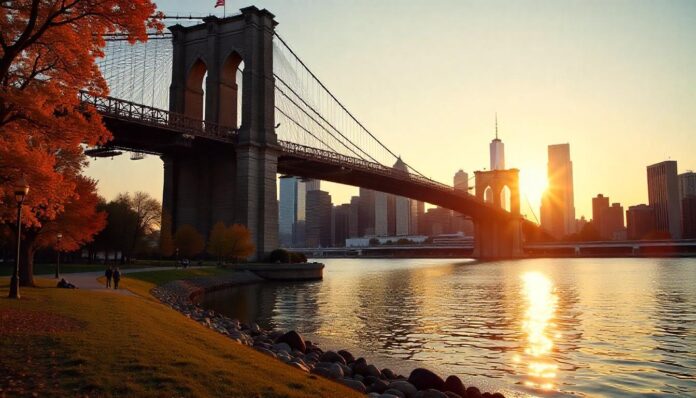The Tourism Exodus: Seattle and America’s Iconic Destinations
Seattle has officially joined the ranks of famed U.S. destinations like New York City, Los Angeles, and Hawaii, facing a considerable decline in tourism. This trend, unfolding across the country, raises pressing questions about the future of travel in the United States. A confluence of rising travel costs, safety worries, and a shifting post-pandemic lifestyle has collectively redefined the travel landscape.
Seattle’s Struggle with Local Tourism
In Seattle, the decline in tourism is stark. While the picturesque Pike Place Market remains a highlight, only 31% of adults visited it over the past year—a significant drop from 41% before the pandemic. Other city attractions, including the Seattle Sounders games and the Museum of Pop Culture, are also seeing lower attendance rates compared to five years ago.
Local residents express concerns over rising crime in popular areas and increasing costs associated with parking and amenities. Even longtime Seattleites find it challenging to enjoy their city due to financial pressures, indicating a broader issue affecting the charm and accessibility of this vibrant city.
New York City’s Visitor Slowdown
Not far behind, New York City is experiencing a projected 17% drop in overall visitors, particularly impacting its Canadian guests. The anticipated loss of around 800,000 Canadian tourists this year signifies a tangible impact on NYC’s economy, especially in tourist hotspots like the Empire State Building and Broadway. Rising hotel prices and unpredictable weather deter visitors, signaling that even the most renowned destination is vulnerable to market changes.
Los Angeles’ Tourism Troubles Post-Wildfires
In Los Angeles, tourism has always been a cornerstone of the local economy, yet recent wildfires have led to an alarming decrease in foot traffic, especially in downtown areas. Iconic locations such as Grand Central Market have reported visitor declines of up to 80%. A decrease in international arrivals at LAX, alongside rising accommodation costs, complicates recovery efforts. The city’s marketing initiatives aimed at reviving interest reflect the uphill battle against both perception and reality in attracting tourists.
Hawaii’s Summer Tourism Setback
Despite its allure, Hawaii faces one of the slowest summer tourism seasons in recent history. The repercussions of the devastating 2023 Lahaina wildfires echo throughout the state, yielding visitor numbers well below pre-pandemic levels. High airfare and a cautious mindset among potential tourists exacerbate the situation. Even with Hawaii’s breathtaking vistas unchanged, these external factors hinder the islands from regaining their tourism momentum.
Park City’s Economic Blow from Sundance
Park City, Utah, has faced a significant challenge as the Sundance Film Festival relocates, resulting in an estimated annual loss of $132 million for the local economy. This once-thriving festival brought visitors globally, propelling local businesses. Without such an event, Park City must rethink its tourism strategy and find alternative ways to attract visitors.
Lake George’s Woes
In upstate New York, Lake George, a small yet tourism-reliant village, braces for a challenging summer. With early indicators showing a downturn in Canadian visitors and reduced spending, local businesses face the prospect of quieter streets. Economic uncertainty has made families hesitant to invest in trips, negatively impacting seasonal inns and attractions essential for summer tourism.
Chicago and San Francisco: Flattening Travel Momentum
Chicago is witnessing a decline in downtown visitors due to reduced business travel and a slower return of leisure tourism. Events and conventions remain subdued, and international visitor numbers are lagging.
Similarly, San Francisco is grappling with lower hotel occupancy and growing traveler hesitancy. Once a mecca for tech tourists, the city’s appeal has waned due to perceptions of safety and affordability, making it less attractive to potential visitors.
Las Vegas: A Declining Visitor Count
Even Las Vegas, traditionally a tourism titan, is witnessing an almost 8% drop in visitor numbers, particularly among international travelers. While the casinos adapt their strategies to stabilize attendance, the allure of spontaneous travel is diminishing, signaling a shift in what attracts tourists to the city.
California’s Challenges
Beyond individual cities, the entire state of California is expected to record its first decline in tourism since the pandemic. High costs, extreme weather conditions, and stiff competition from other states contribute to this downturn. Tourist locations from Napa Valley to San Diego are grappling with decreased domestic and international traveler numbers.
A National Trend in Tourism
The situation in Seattle is not an anomaly; it mirrors a broader trend affecting major and small tourism destinations across the United States. Faced with rising costs, safety concerns, and the aftermath of the pandemic, many areas are witnessing a collective tourism exodus.
In today’s travel landscape, it’s clear that cities must adapt to the changing market by prioritizing affordability, safety, and meaningful experiences that resonate with the modern traveler. The iconic views and attractions that once guaranteed popularity are no longer sufficient to draw crowds. The message is simple: to thrive, cities must evolve alongside the needs and concerns of tourists.
